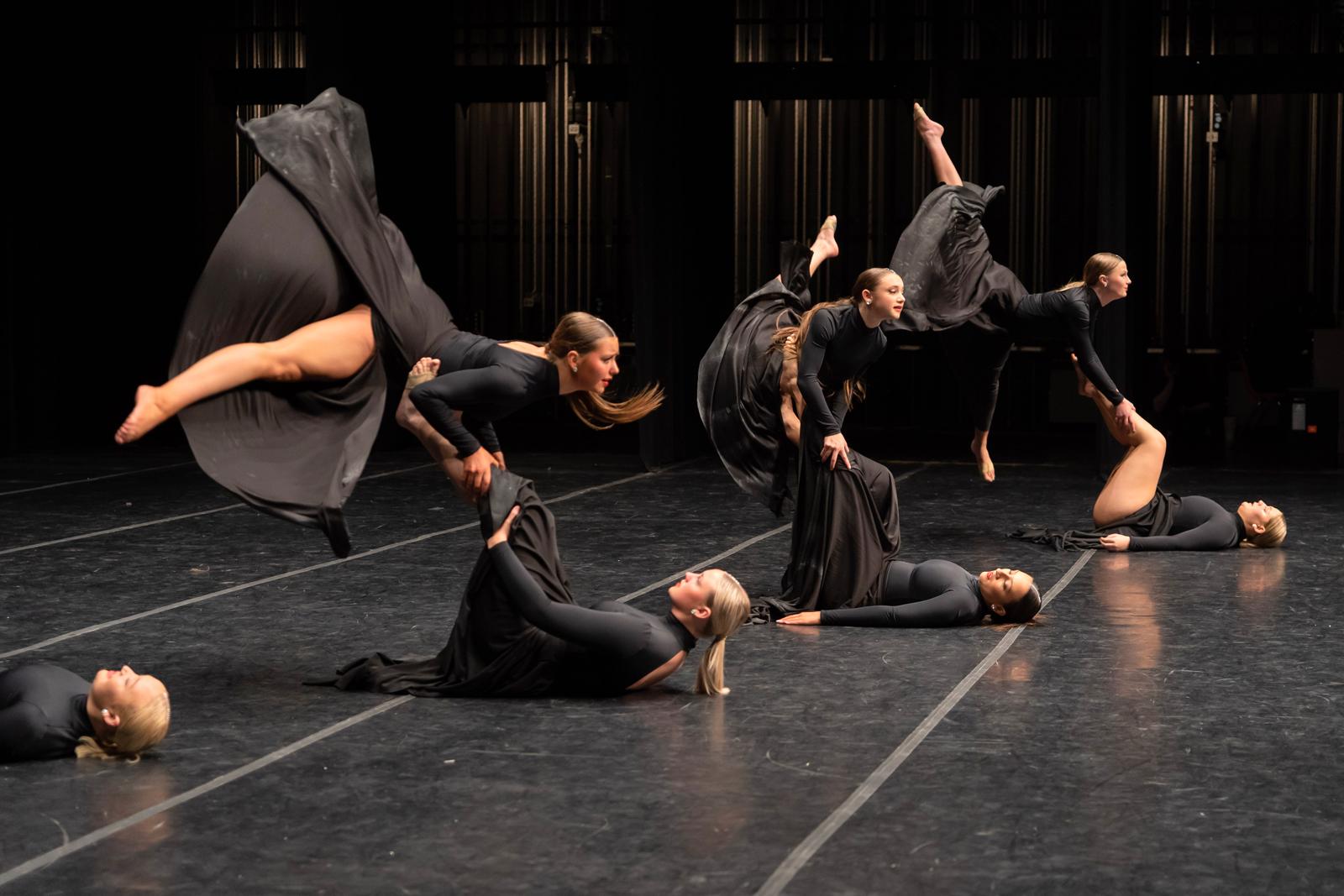Dance has been a significant part of art and culture for thousands of years. Many forms of dance are performed worldwide, incorporating different styles and music. Over the years, dance has evolved and transformed through the creative fusion of different dance styles and techniques. So, what is lyrical dance?
Lyrical dance is a form that pulls inspiration from jazz and ballet, and other techniques using lyrics from songs allow a dancer to express strong emotions through dance moves. It has quickly become a popular dance style for children and adults alike looking to expand their dancing skills. What makes lyrical so unique?
What is Lyrical Dance?
Lyrical dance is a relatively new form of dance developed from jazz dance and ballet. The beautiful and expressive choreography is a pleasure to watch and even more enjoyable to perform. The best lyrical choreographers choose music with meaningful, powerful, or touching lyrics. They create a unique dance routine to the chosen song designed to clearly convey the meaning of the song. The dancer performs the moves as though telling a story, much like the lyrics of a song. Lyrical pieces can be performed to various music genres, from pop to musical theater to jazz. With the right movements, just about any song can have a beautifully choreographed lyrical dance performed.
Differences Between Lyrical, Modern, and Contemporary Dance
Every form of dance communicates different emotions and concepts. While lyrical dance, modern dance, and contemporary dance are often used interchangeably, these three dance forms have some crucial differences that are important to understanding, especially if you’re looking to learn as a dancer or choreographer.
Contemporary Dance
Contemporary dance pulls modern, jazz, and ballet elements to create a routine. The style focuses on fluidity of movement more than technique and requires more creativity from the dancer than other forms of dancing. The dancer is in control of the dance, which can appear almost effortless to perform. Much of the dance may involve the dancer creating the dance through improvisation. Because of the dancer’s freedom, the dance can appear more abstract than other styles.
Dancers performing contemporary dance need to be trained through strength and conditioning to perform elegant control over the speed, directional changes, and inversions to reduce the risk of injury performing these moves.
Modern Dance
While modern dance is the oldest of these three varieties of dances, it still comes up with discussing contemporary and lyrical dance styles. Modern dance was developed as a rebellion against ballet to push the boundaries of classical dance training in a way that explores movement in new ways. The specific techniques are used as a foundation for many dance styles.
Lyrical Dance
Lyrical dance is recognized as a beautiful dance form that builds on the foundations of ballet and jazz, with a strong focus on technique. Dancers perform a cohesive emotional, expressive dance through guided movements following the lyrics of a song. Dancers will follow the precise movements developed by choreographers and learn how to express emotions through their body language and facial expressions.

Dancers on a competitive team from The Dance Academy Lehi performing a lyrical dance number at a dance competition.
Why the Rise in Popularity of Lyrical Dance?
The specific origins of lyrical dance continue to remain unknown, but the form has been seen in live shows on Broadway and in dance competitions. The popularity of the style has increased over the last few years, thanks to popular televised national dance competitions. The dance style has been enjoyable for audiences to watch as they see people of all dance experience levels beautifully move their bodies in an artistic retelling of the lyrics of their chosen songs. It’s inspired more dance academies to open lyrical dance classes to allow people wanting to learn this style the opportunity.
Beyond the popularity brought on by the national dance competitions, lyrical draws from the popular styles of ballet, modern, and jazz, but it’s not as rigorous as the other styles. It focuses on the expressions of the dance and less on the precision of the individual style. The lyrical form opens the possibilities for more people of all ages and body types to express themselves.
Lyrical can be a great style for people learning to move their bodies in expressive and artistic ways. Whether you are young or old, there is plenty of room for self-expression with lyrical dance making it an enjoyable experience for dancers of all experience levels.
If you’d like to explore lyrical dance, visit The Dance Academy and check out our introductory dance classes, which require no previous experience. As it is one of the more popular styles in competitions, our competition dance teams will often train and perform beautiful lyrical pieces created by some of our award-winning choreographers.
